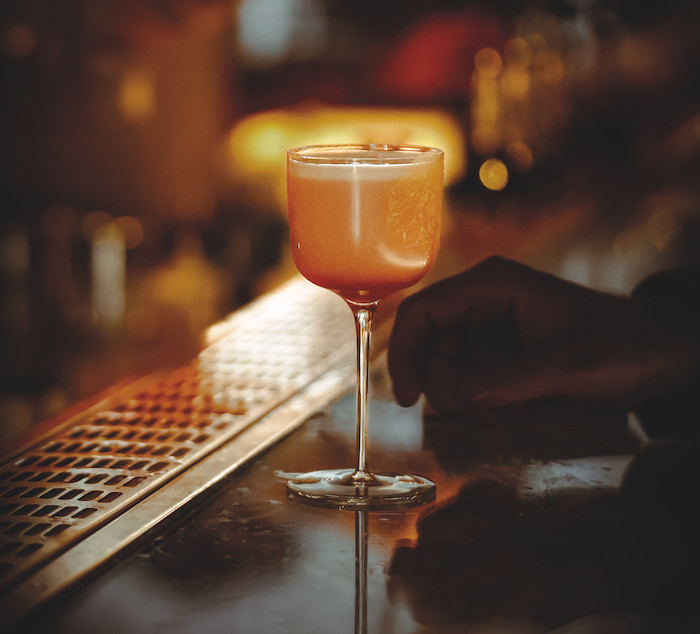
Clinton Cawood has the inside knowledge on the gin-honey-lemon sipper, the Bee's Knees.
With all apologies to the Unsinkable Molly Brown, it’s unlikely, despite prominent claims to the contrary, that she invented the Bee’s Knees. This deceptively simple – and aptly named – combination of gin, honey and lemon, sometimes with a little orange juice too, frequently finds itself linked not only with the American socialite Margaret, or Molly Brown, but with Prohibition-era drinking in general, often cited as an example of the kind of drink created to mask questionable gin during that era. Yet its true birthplace was likely across the pond, in Paris.
You see, Frank Meier might not have survived the Titanic, nor been the subject of a 1960s Broadway musical about his life, but he is the more likely creator of this enduring classic, while he was head bartender of the Ritz in the 1920s. Indeed, in his The Artistry of Mixing Drinks (1936) – a wonderful tome containing not only 500 drinks, but recipes for sandwiches, a brief history of horse racing, antidotes for poisons and more – Meier marks this as one of nearly 40 original creations in the book, and a few previous mentions in print support his claim. His version calls for “the juice of one-quarter lemon, a teaspoon of honey, one-half glass of gin”, shaken well.
The minimalist formulation of this Sour has proven to be a reliable base for variations over the years – some vary the spirit, substituting tequila for gin, for example, while others experiment with the citrus, like Amaro Bar in London’s yuzu-based twist. It’s the inspiration for one of the classic riff s on the recently launched Regenerative Forces menu at Dover Yard at 1 Hotel Mayfair, entitled Ember Hive. Director of bars Giulio Guarini says that initial inspiration came from the classic’s name. “During Prohibition, the phrase was used as a silly way to describe something highly desirable, and that’s exactly what we wanted this drink to be,” he says, attributing the cocktail to head bartender Daniele Mondelli.
To achieve this, gin is replaced by scotch, with a pandan acid juice serving as the citrus. The honey, local and sustainable, is spiced with fennel, hibiscus, pink peppercorn and cardamom, and there’s a splash of Midi Apéritif for good measure. “The idea was to add a bit more depth, structure and a longer finish, bringing in some spice and aroma with pandan and spices,” says Guarini. “The aperitif adds a light bitterness that ties everything together, balancing the citrus and the sweetness of the honey.”
EMBER HIVE by Dover Yard, London (pictured)
Glass: Nick & Nora
Garnish: Bee pollen dust on the side of the glass
Method: Shake ingredients with ice and double strain
• 50ml Glenturret 12 Year Old
• 25ml pandan acid juice*
• 25ml hibiscus and pepper honey**
• 20ml Midi Apéritif
* Infuse 20g dried pandan leaves in 350ml boiling water, cover and let steep for 20 minutes, then strain and add 20% citric acid by weight while still warm. Stir and let cool.
** Combine 2.5kg honey with 300g fennel seeds, 100g dried hibiscus flowers, 20g pink peppercorns and 10g cardamom pods, heat to 65°C and hold for one hour, stirring occasionally. Let cool to room temperature and strain to remove solids.


